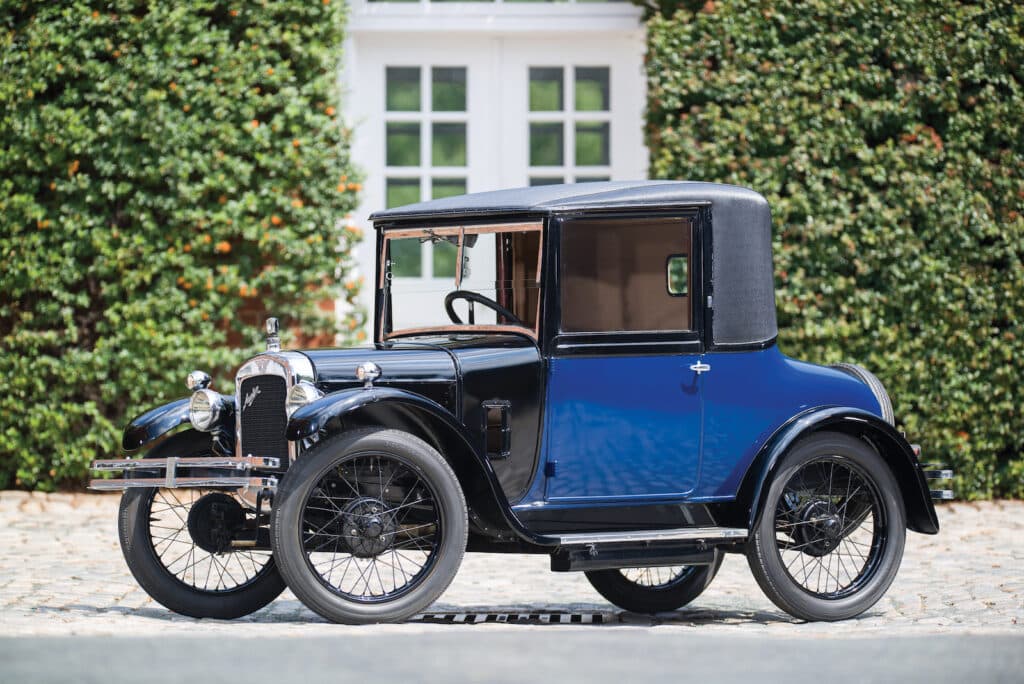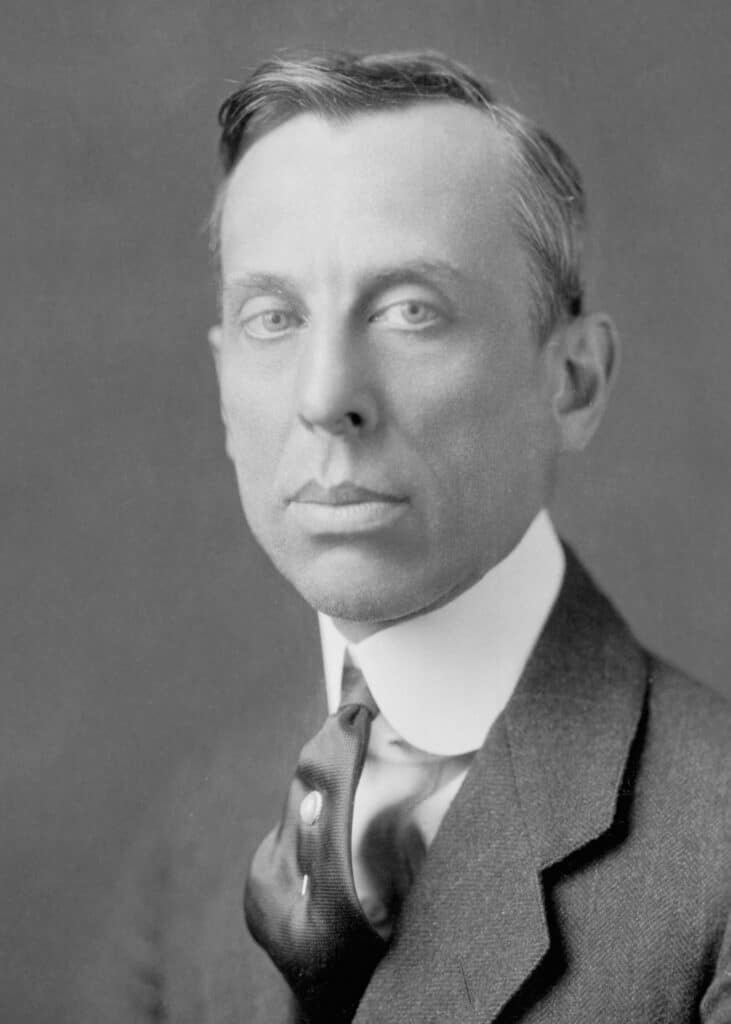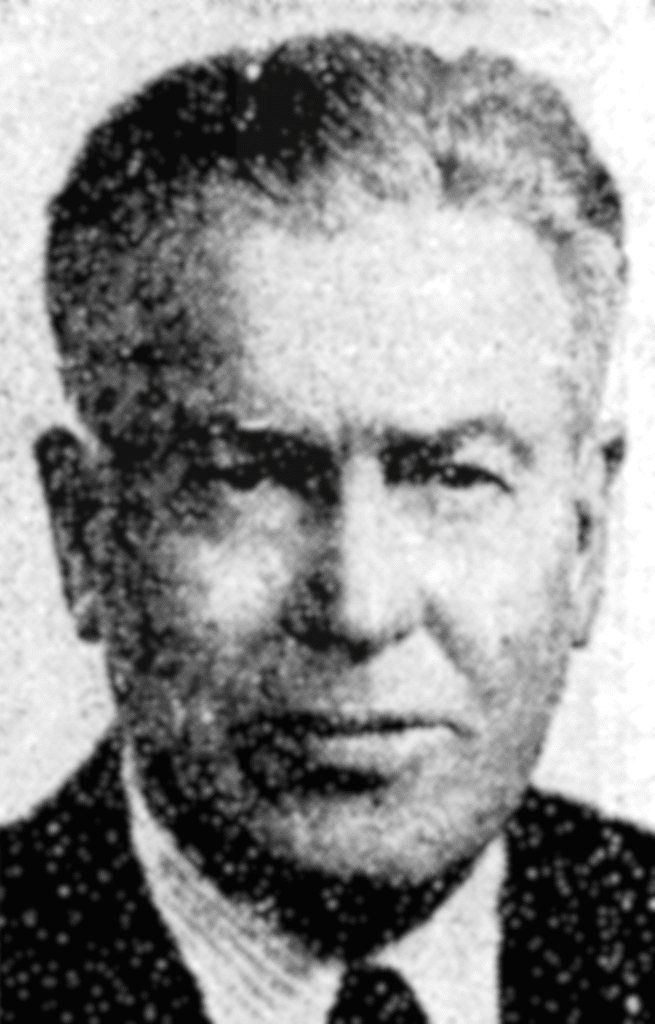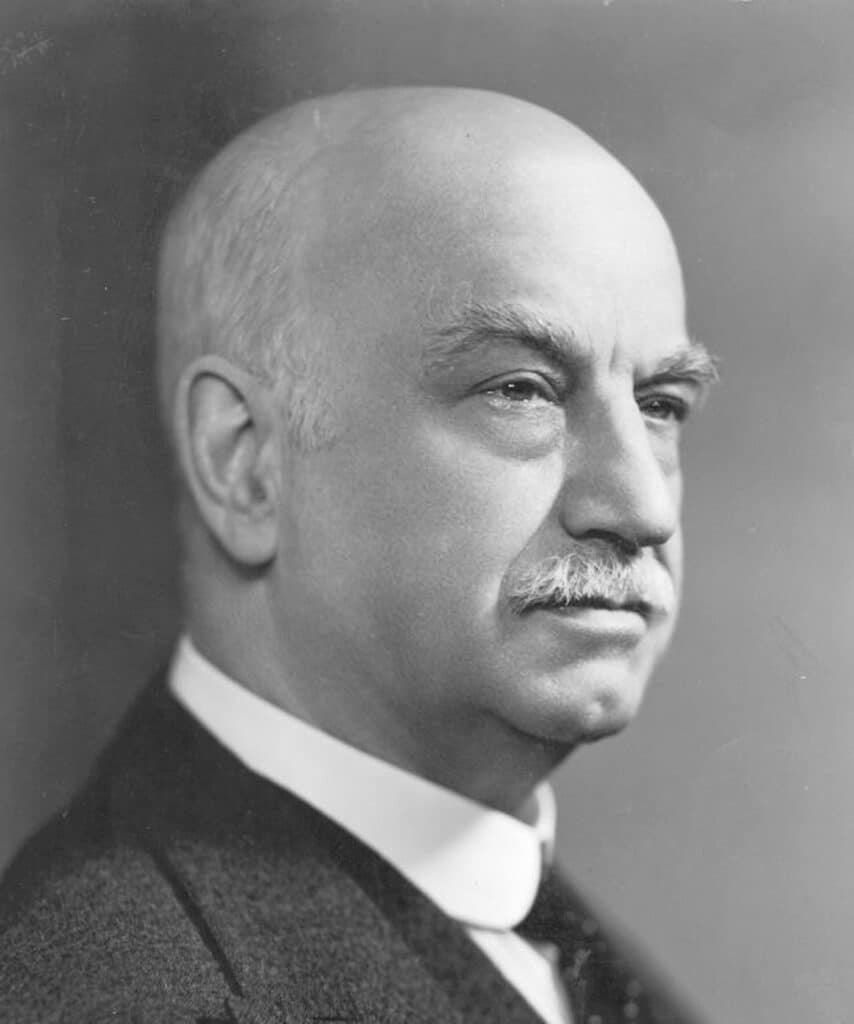
This week in 1925, General Motors drops its bid to buy Austin Motor Co. after financial disagreements scuttle the deal.
During its pre-bankruptcy era, GM’s overseas car-manufacturing operations consisted of Adam Opel A.G. in Germany, Vauxhall Motors Ltd. in England, and General Motors Holden in Australia. The first two companies are now owned by Stellantis, while the third shut down in October 2017.
But all of that was still in the future in 1919.
At the time, half of the 420,000 cars and trucks GM sold overseas were sold in Great Britain, France, Germany and Italy. But it was far from easy. While these countries were the richest export markets, they produced about three-quarters of the cars sold, with tariffs and taxes in place that conspired to make any imported vehicle difficult to sell. The rest of the overseas market was open to American vehicles, but the countries were relatively underdeveloped, minimizing sales, according to former GM CEO and Chairman Alfred Sloan, in his book, “My Years With General Motors.”
Looking for a European base

Sloan and his board soon realized that to make any headway, the company would need a European manufacturing base, rather than exporting completed cars or knockdown kits. So then-GM CEO William Durant sent Sloan, along with DuPont representative J. A. Haskell, along with GM’s Charles Kettering, Charles Mott, Walter Chrysler and Alfred Champion, to negotiate with France’s André Citroën, with the intention of purchasing a 50% stake in Citroën.
“He was interested in selling his company. At the end of our stay in France we were still uncertain about the wisdom of acquiring the property,” Sloan wrote, noting that there were issues that needed to be resolved.
“The French government did not like the idea of American interests taking over an enterprise that had contributed importantly to the war effort. For another, the production facilities did not appeal to us, and it was clear that if we undertook to run Citroën, an investment running far beyond the initial cost would be required. Furthermore, the company’s management then was not entirely adequate.”
And Sloan figured that either he or Chrysler would need to go to France to shore up the French company’s management, and Sloan wasn’t sure GM’s bench was deep enough to afford it.
Citroën would eventually be acquired by Michelin, and GM never developed an automaking venture in France.
Mass production proves important

What Sloan and GM were running into was the difference between European and American markets.
American automakers developed around mass production, which was known at the time as Fordism. By employing the assembly line and mass production, Henry Ford and the rest of the American auto industry dramatically reduced the prices of American cars, while increasing their availability.
But Europe was made up of individual countries in which most people couldn’t afford to own a car. So Fordism proved useless. Even the United Kingdom, the largest non-American market, produced the equivalent of 4% of U.S. automobile output by 1925.
Still, following the end of talks with Citroën, GM’s board set its sight on England.
The U.K. market in 1925

“The future of American cars in the British market looked poor in the early 1920s. The so-called McKenna duties raised a formidable tariff barrier to all foreign vehicles,” Sloane said. “Altogether, the fees, insurance, and garage charges on a Chevrolet touring car in England in 1925 came to £1 sterling a week (about $250 a year) — all this before normal operating costs. By contrast, the owner of an English-made Austin had fixed charges of perhaps eleven shillings a week (about $138 a year), and his first cost was lower too.”
While the British market was Europe’s largest, it was still small, producing 160,000 units a year in 1925, a number split among dozens of manufacturers. As a result, British automakers lacked the economies of scale of their Yankee competitors, as U.S. manufacturers were producing more than 4 million units annually that same year.
At the time, Britain’s leading car manufacturer was Ford Motor Co., which had set up operations at Trafford Park, Manchester in 1911. By 1913, the company was Britain’s leading automaker.
But the company’s U.K. executives were forced to follow Ford’s U.S. product and marketing strategies, which led to Ford losing market share to its second-place rival Austin Motor Co. Ford resisted calls to develop a small car for the British market, as the Model T proved too pricey for U.K. consumers.
GM saw an opportunity, but also knew that a return on any investment would be long term, as there was no hope of an immediate profit given the size of the market.
Still, in 1924 through 1925, James Mooney, vice president of General Motors Export Companies, spoke with Sloan and others within GM about the possibility of acquiring Austin after touring various European automakers, including In spring 1925 Mooney visited a number of major European car firms, including Britain’s Morris Motors, Germany’s Adam Opel and Daimler Benz, France’s Renault and Voisin, and Italy’s Fiat, in addition to Austin and Citroën.
Austin Motor Co.

Austin Motor Co. was established by Herbert Austin, an engineer by training who had gotten his start with the Wolseley Sheepshearing Co. Soon after his arrival, Wolseley diversified into production of parts for bicycles and machine tools, and by 1896, had produced its first car. By 1901, Austin was a director at the firm. But disagreements with others led to his departure and the founding of Austin Motor Co. in 1905.
Austin grew, especially during World War I, when it expanded to employ 2,000 workers, and became a publicly listed company. By then, Austin was following Ford’s product and mass-production model with the high-priced Austin 20.
But the 1920-21 depression nearly killed the company, and Austin rethought his product strategy. In 1922, the company introduced the diminutive Austin 7, powered by a 24-horsepower, 700-cc engine. It would prove an enormous success around the world. BMW licensed it, selling it under the Dixie name, it would even be built in the U.S. in the 1930s as the American Austin.
But that was in the future.
In 1925, its position in the U.K. market and around the world made it a tempting target for GM, especially after Herbert Austin proposed selling the Austin Motor Co. to GM in May 1925.
Negotiations resume
This was not the first dance between Austin and GM. There had been talks between the two as early as 1920, but Austin’s high debt load at the time scuttled the deal. Now, the two were talking once more, and Austin’s future was much brighter. GM’s Mooney was enthusiastic about the Austin 7, with its diminutive size being its only shortcoming.

He wrote that it is, “most interesting and shows just what can be done to decrease weight and eliminate parts and still have a machine which will operate and carry passengers. It is rather a remarkable piece of engineering work.”
Mooney lauded Austin’s extensive dealer network, but felt GM could help improve marketing. He also noted that most of the factory’s machinery was American-made.
By August 1925, a takeover proposal is approved by Austin’s board, one that values the automaker at £3.7 million, nearly 26% less than its 1925 book value of £5 million, with much of it coming from a write-down of fixed assets. By the end of August, the proposed takeover is sent to Austin’s shareholders. But objections by three of eight board members who stood to lose financially in the deal, as well their vociferous campaign against GM’s proposal, lead GM to withdraw from negotiations.
Sloan, for one, was not sorry.
“I was actually relieved to hear this news. For it seemed to me that Austin had largely the same disadvantages that had bothered me about Citroën six years earlier; its physical plant then was in poor condition and its management was weak. And I still had some doubts whether our own management was strong enough to make up for Austin’s deficiencies; indeed, the continued dilution of our management strength as we expanded overseas and at home was a problem all during the 1920s.”
Two months later, GM acquires England’s Vauxhall Motors for $2.6 million. But history would’ve been far different if it had bought Austin instead.
- SEO Powered Content & PR Distribution. Get Amplified Today.
- PlatoData.Network Vertical Generative Ai. Empower Yourself. Access Here.
- PlatoAiStream. Web3 Intelligence. Knowledge Amplified. Access Here.
- PlatoESG. Automotive / EVs, Carbon, CleanTech, Energy, Environment, Solar, Waste Management. Access Here.
- PlatoHealth. Biotech and Clinical Trials Intelligence. Access Here.
- ChartPrime. Elevate your Trading Game with ChartPrime. Access Here.
- BlockOffsets. Modernizing Environmental Offset Ownership. Access Here.
- Source: https://www.thedetroitbureau.com/2023/09/the-rearview-mirror-not-general-motors-cup-of-tea/



